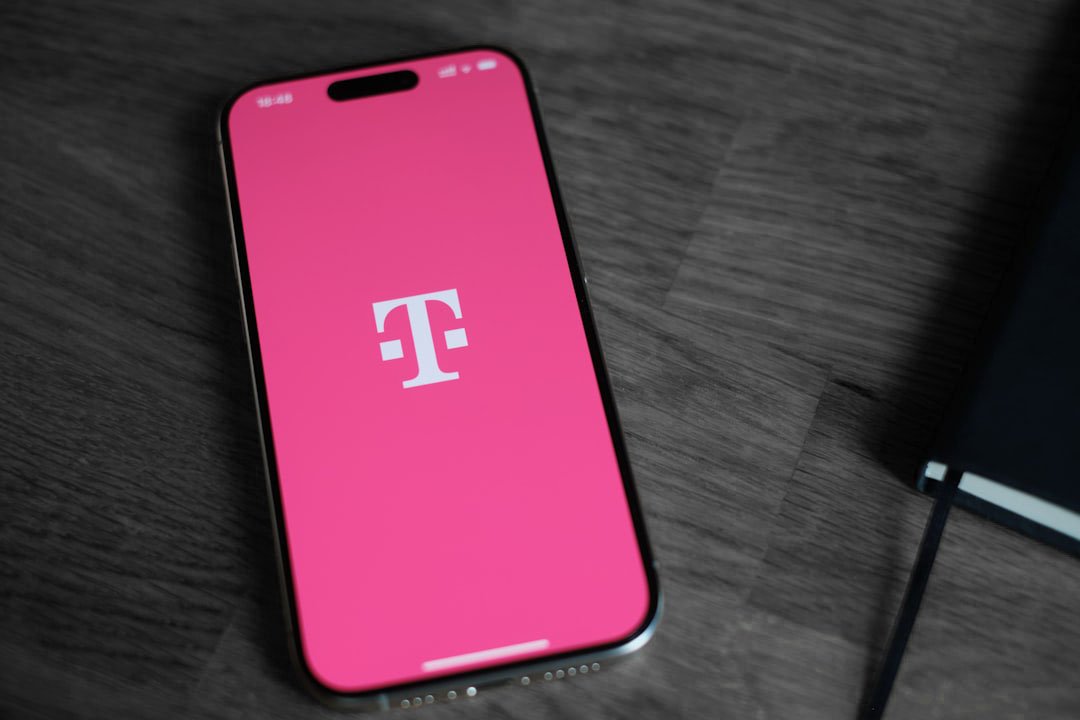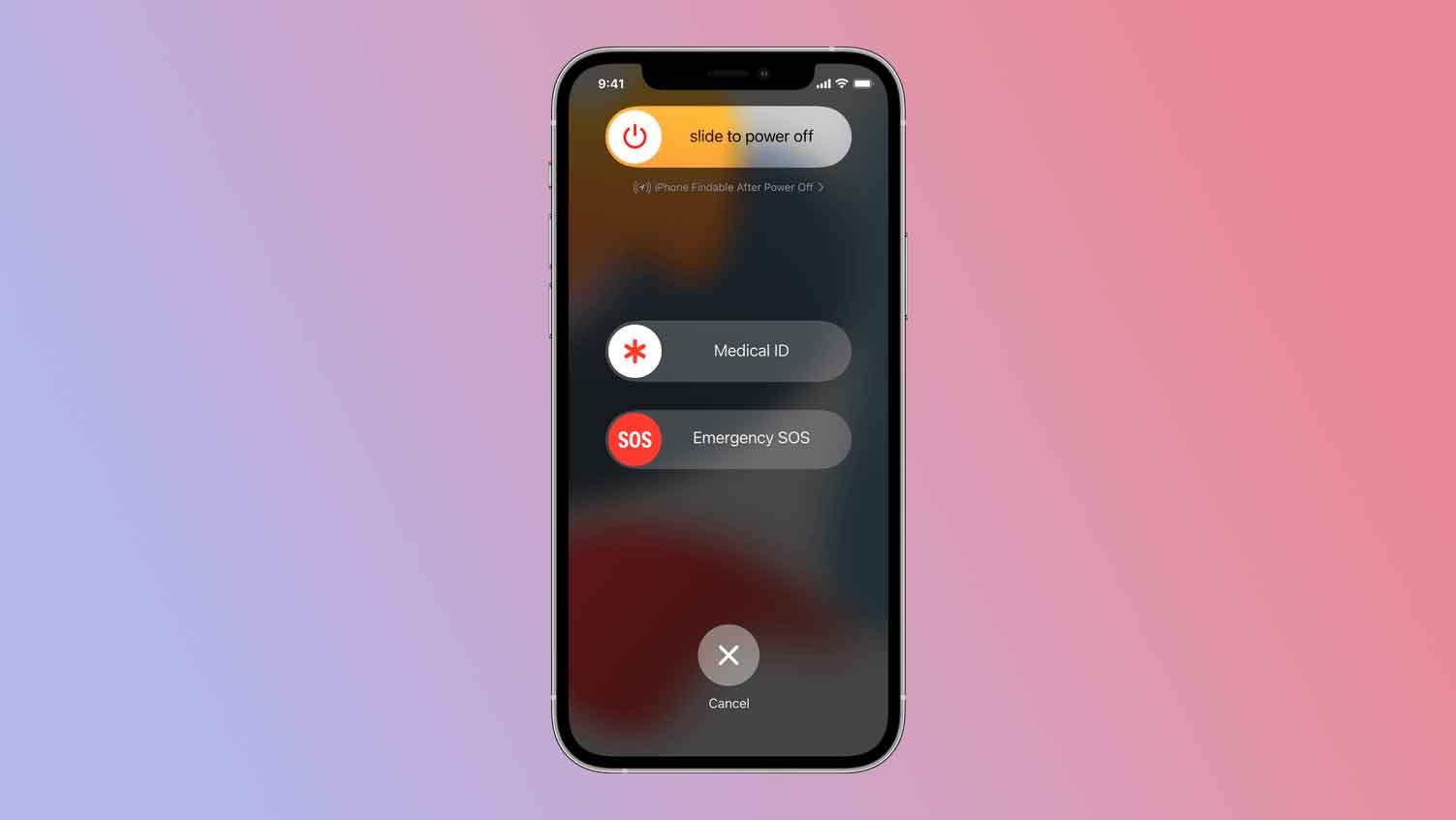T-Mobile is Raising Prices Yet Again in 2025 (Regulatory Programs & Telco Recovery Fee) – Are You Affected?
Table of Contents Show
If you’ve recently glanced at your T-Mobile bill and felt that little pang of annoyance—well, you’re clearly not alone. T-Mobile, the company once proudly waving the flag as the industry’s scrappy “Un-carrier,” seems to have taken another small step toward behaving like, well, a traditional carrier. Yep, they’re raising prices again.
What’s Actually Changing on Your Bill?
Starting April 23, 2025, T-Mobile customers will see a hike in the mysteriously named “Regulatory Programs & Telco Recovery Fee.” Sounds official, doesn’t it? Well, it’s not actually a government tax or fee. T-Mobile made this very clear. Instead, it’s essentially the company’s way of passing certain operating costs directly onto customers.
What’s changing:
Voice lines: Up by $0.50 per month (from $3.49 to $3.99 per line).
Data-only lines (tablets, hotspots): Up by $0.20 per month (from $1.40 to $1.60 per line).
Let me show you a quick visual to clarify things:
| Line Type | Fee Component | Before 4/23/25 | After 4/23/25 | Increase |
|---|---|---|---|---|
| Voice Line | Regulatory Programs Fee | $0.50 | $0.50 | No change |
| Voice Line | Telco Recovery Fee | $2.99 | $3.49 | +$0.50 |
| Voice Line | Total Fee | $3.49 | $3.99 | +$0.50 |
| Data-Only Line | Regulatory Programs Fee | $0.12 | $0.12 | No change |
| Data-Only Line | Telco Recovery Fee | $1.28 | $1.48 | +$0.20 |
| Data-Only Line | Total Fee | $1.40 | $1.60 | +$0.20 |
(Data Source: T-Mobile’s support documents.)
Notice something important here? The entire increase applies exclusively to the “Telco Recovery Fee,” while the “Regulatory Programs Fee” remains untouched. Why does that matter? Well, it puts T-Mobile’s justification under the microscope. They claim the increase helps cover inter-carrier costs—basically the charges they pay to other carriers when your call hops onto another network—as well as expenses from network leases.
T-Mobile's Fees Explained: Regulatory Programs vs. Telco Recovery
If you’re like most people (me included), telecom billing terms can seem about as clear as reading ancient runes. Let’s simplify it:
Regulatory Programs Fee (no increase)
Covers mandatory government-related costs. I like to think of it as a necessary evil—funding services like Enhanced 911 (E911) and allowing you to keep your phone number when switching carriers.
Telco Recovery Fee (the culprit behind your recent bill increase)
Covers costs T-Mobile pays to other phone networks for delivering your calls, plus expenses related to leasing network infrastructure. Imagine it as T-Mobile’s own rent-and-utility bills—just passed onto you.
Interestingly, despite sounding bureaucratic these fees—as stated earlier—aren’t mandated by the government. T-Mobile explicitly states these charges are “collected and retained” by the company to offset their own business costs. Translation: it’s not a tax, just a cost T-Mobile chooses to pass onto customers.
The subtle wording—combining “Regulatory” with “Recovery”—has stirred confusion among users, triggering complaints and even class-action lawsuits. Sure, T-Mobile covers itself legally by clearly saying it’s not a government-imposed tax. But let’s be honest, how often do you read the fine print? The way it’s presented on your monthly bill can easily lead to misunderstanding, leaving customers feeling misled.
As T-Mobile continues down this road, it’s fair to ask: Is the “Un-carrier” gradually becoming more of a regular carrier, hidden fees and all?
Why the Sudden Price Hike? T-Mobile’s (Kinda) Explanation
When T-Mobile sent out those text messages announcing the fee increase, they stuck to the classic corporate script: the hike helps cover expenses related to government mandates and network costs. Sounds fair on the surface, right? But if you’re expecting a clear breakdown of why exactly this fee jumped by $0.50 per voice line and $0.20 per data-only line precisely now, good luck—because T-Mobile hasn’t provided specifics.
Sure, they’ve broadly mentioned “rising costs” before, usually when hiking prices across various plans. But as far as details on what’s driving this specific increase in the Telco Recovery Fee—like higher inter-carrier charges or pricier network leases—T-Mobile’s lips are pretty tightly sealed. The most specific they’ve gotten is pointing out to droidlife that this fee hasn’t changed since February 2022, perhaps implying we should be grateful it didn’t happen sooner.
This lack of transparency isn’t just annoying; it feeds skepticism among customers. Many feel this fee increase is less about necessary cost recovery and more about padding corporate pockets. Timing also matters. Coming shortly after recent price hikes targeting older T-Mobile plans, it feels like T-Mobile is squeezing customers who held onto legacy plans or cheaper Essentials plans a bit harder. No wonder there’s a class-action lawsuit floating around—it directly cites T-Mobile’s fuzzy justification as part of the problem.
Who’s Actually Getting Hit by This Price Increase?
The kicker here is that the fee hike doesn’t affect everyone equally. Whether you’ll feel the sting depends completely on the structure of your T-Mobile plan—specifically, whether your plan includes taxes and fees as part of its monthly price.
You’ll Feel the Impact If You’re On:
Essentials Plans
These budget-friendly options keep taxes and fees separate. Ironically, this means customers trying to save money get hit hardest by unexpected increases.
Older or Grandfathered Plans
Think Simple Choice or pre-“Taxes Included” versions of Magenta. If you’ve stubbornly stuck with your trusty old plan, surprise—you’ll pay more now.
Certain Business Plans
Businesses aren’t off the hook either; some corporate plans still itemize these sneaky fees separately.
Some Prepaid Plans
Surprisingly, even prepaid customers might see this fee pop up—so check your statement carefully.
You’re in the Clear If You’re On:
Go5G Plans (including Go5G, Go5G Plus, Go5G Next)
Magenta and Magenta MAX Plans
T-Mobile ONE Plans
These premium plans bundle taxes and fees neatly into the advertised price, so your monthly bill stays stable—no surprises (for now, anyway).
Quick Example:
To illustrate, say you’ve got a family plan with four voice lines on T-Mobile Essentials. Each line’s increase is only $0.50, but multiplied by four lines, that’s $2 extra per month. Not huge, but it adds up over the year. And don’t forget, even those so-called “free lines” you snagged during a promotion might still be subject to this fee—promotional credits typically don’t cover these sneaky extras.
Is T-Mobile Nudging Customers Toward Pricier Plans?
This selective price hike effectively targets T-Mobile’s most price-sensitive customers—those already choosing lower-cost plans or clinging onto older plans. It’s subtle (or maybe not-so-subtle) encouragement for these users to migrate to higher-tier, taxes-and-fees-included plans. Sure, you’ll pay a higher base price, but at least your bill stays predictable, right? Clever, but for budget-minded customers, it might feel more like a gentle shove than friendly advice.
A Pattern of Increases? T-Mobile's History with Fees
If this recent hike feels like déjà vu, that’s because it kind of is. T-Mobile’s April 2025 bump in the Regulatory Programs & Telco Recovery Fee isn’t a random blip; it’s the latest chapter in a long story of gradual, incremental price hikes.
Let’s rewind a bit to see how we got here.
Around 2004
The Regulatory Programs Fee quietly appeared on bills, initially to cover legit-sounding government mandates like E911 services. Seems reasonable, right?
January 2016
Enter the Telco Recovery Fee, aimed at recovering network costs—like paying other carriers to connect your calls or leasing network infrastructure. Less clear-cut, but still plausible.
Since then, T-Mobile hasn’t exactly been shy about nudging up these fees, especially for customers on non-Taxes-Included (non-TI) plans:
| Date | Voice Line Fee | Increase | Quick Note |
|---|---|---|---|
| June 2017 | $2.71 → $3.18 | +$0.47 | Initial significant bump after introduction |
| Feb 2022 | $3.18 → $3.49 | +$0.31 | Regulatory fee portion actually dropped, while the Telco Recovery increased notably |
| April 2025 | $3.49 → $3.99 | +$0.50 | Latest round, all Telco Recovery |
And here’s something a little sneaky: Back in 2022, T-Mobile reduced the Regulatory Programs portion (from $0.60 to $0.50) but simultaneously jacked up the Telco Recovery portion from $2.58 to $2.99. Clever move. Why? Probably because “network lease” costs and “inter-carrier fees” are less transparent and harder for customers to verify compared to clearly defined government programs.
Think of it like a coffee shop suddenly charging more for “barista craftsmanship” instead of “coffee beans.” Harder to challenge, easier to accept—even though you’re paying more overall.
And let’s not overlook the timing. This fee increase arrives hot on the heels of two other recent price bumps:
April 2024
Older plans (like certain Magenta and Simple Choice plans) got hit with $2–$5 monthly increases.
Early 2025
Another wave of $5-per-line hikes targeted even more legacy plan holdouts.
Small hikes like $0.31 here, $0.50 there might feel insignificant individually, but they quietly add up. According to the ongoing class-action lawsuit, this fee alone rose by 28% over eight years. Sneaky, incremental increases are easier to swallow than one big shock. But the cumulative result is undeniably higher bills, which makes you wonder if the “Un-carrier” tagline is slowly drifting toward irony.
How Does T-Mobile Compare to AT&T and Verizon?
T-Mobile loves to remind us they’re not alone in charging these fees, and they’re right—AT&T and Verizon are playing the same game, just with slightly different branding:
| Carrier | Fee Name | Monthly Voice Line Fee |
|---|---|---|
| T-Mobile | Regulatory Programs & Telco Recovery Fee | $3.99 (newly raised in 2025) |
| Verizon | Administrative and Telco Recovery Charge | $3.50 (recently raised from $3.30) |
| AT&T | Administrative & Regulatory Cost Recovery Fee | $3.49 |
Amazingly, Verizon even faced (and settled) a $100 million class-action lawsuit about these fees in 2023—but still bumped up their charge afterward. Bold move, Verizon.
Now here’s the awkward part for T-Mobile. Despite positioning itself as the friendly “Un-carrier” brand, it now officially has the highest recovery fee among major U.S. carriers for customers on non-TI plans. That’s an uncomfortable crown for the company that once loudly criticized these kinds of hidden charges.
Sure, T-Mobile still aggressively promotes its premium Go5G plans with the perk of bundled taxes and fees, clearly distinguishing itself from AT&T and Verizon’s traditional billing practices. But ironically, its budget-conscious Essentials customers and legacy plan holdouts—who might need transparency the most—now face the steepest explicit fees.
It’s a bit like a grocery store proudly advertising “no checkout fees!” at their premium checkout lanes, while quietly adding surcharges to self-checkout machines used by budget-minded shoppers. Technically accurate, but still kind of a jerk move.
More Than Just Spare Change? The Lawsuit That Could Rewrite Your Phone Bill
On paper, a $0.50 increase per line doesn’t sound like much. That’s less than a cup of gas station coffee. But when it shows up on millions of bills—month after month—it adds up fast. And for many T-Mobile customers, it’s not just about the money. It’s about transparency. Or rather, the lack of it.
Unsurprisingly, Reddit lit up like a signal tower after the April 2025 hike. Comments ranged from “BS” to “pure money grab” to good old-fashioned “nickel and diming.” One user summed it up: “I stayed on Essentials to save money. Now I’m basically being punished for it.”
That simmering frustration didn’t just stay online. It escalated into a class-action lawsuit that could shake up how T-Mobile—and maybe the industry—approaches these fees.
Beets et al. v. T-Mobile: The Core Allegations
Filed in late 2024, the case takes aim squarely at the Regulatory Programs & Telco Recovery Fee (RPTR Fee), calling it deceptive, arbitrary, and possibly illegal. Here’s what the plaintiffs are claiming:
Misleading Labeling
The fee shows up under “Government Taxes and Fees” on bills. The lawsuit argues this is intentionally deceptive—making customers think it’s a mandatory charge imposed by the government, not a discretionary one cooked up by T-Mobile’s finance team.
Creative Accounting
According to the filing, the RPTR Fee is a “revenue-padding concoction” that doesn’t necessarily reflect real, verifiable costs. Translation: T-Mobile can tweak the amount whenever it wants, with zero transparency.
Fine Print Fail
The Subscriber Agreement allegedly doesn’t mention how much the fee is, when it applies, or that it’s charged per line. Most customers only find out when they see it on their first bill—after they’ve signed up.
Legal Trouble Brewing
The suit claims these practices violate both federal Truth-in-Billing regulations (specifically 47 U.S.C. § 201(b) and 47 C.F.R. § 64.2401) and various state-level consumer protection laws.
If successful, the case could impact tens of millions of current and former T-Mobile postpaid customers. The plaintiffs are seeking damages (exact amount TBD) and hoping to hold T-Mobile accountable for what they say is a long-standing pattern of burying fees in the fine print.
The Precedent: Remember Verizon?
If this all feels familiar, that’s because it is. As mentioned earlier, Verizon settled a similar class-action suit in 2023 for a cool $100 million. No admission of wrongdoing. No rollback of fees. They just paid the fine and kept the meter running. T-Mobile might be eyeing that move as a cost of doing business—an annoying speed bump, but not a roadblock.
Final Thoughts: What This Means for You, T-Mobile Customer
Let’s recap what actually changed—and who needs to care.
Starting April 23, 2025, the Regulatory Programs & Telco Recovery Fee went up:
Voice lines: now $3.99/month, up $0.50
Data-only lines: now $1.60/month, up $0.20
You’ll only see this increase if you’re on a plan that doesn’t bundle taxes and fees—such as:
Essentials plans
Legacy plans like Simple Choice or older Magenta versions
Certain Business and Prepaid accounts
If you’re on a Taxes and Fees Included (TI) plan—like Go5G, Magenta MAX, or T-Mobile ONE—this fee is already baked into your bill. No change. No new line item. Just the same (probably still too high) monthly total.
But for the rest of us, especially families with multiple lines, the impact is real. Four lines? That’s $2/month more, or $24/year. Not life-ruining, but definitely annoying—especially when the rationale for the increase feels paper-thin.
TL;DR: Here’s What You Should Do
Check your bill. Look for the “Regulatory Programs & Telco Recovery Fee” line. If it jumped, you’re affected.
Know your plan. If your taxes and fees aren’t included in your base rate, you’re vulnerable to more hikes like this.
Compare your total cost. That includes the plan, all the hidden fees, and taxes. Sometimes, a more expensive-looking TI plan might actually be cheaper once everything is tallied up.
Look at competitors. Prepaid carriers and MVNOs (like Mint, Visible, or Google Fi) often have simpler, more transparent pricing.
In a world where your smartphone plan reads like a cable bill from 2007, staying informed is your best defense. T-Mobile might still want to call itself the Un-carrier, but when it walks like a traditional carrier and charges like one… well, you know the rest.
Have you noticed the fee increase on your bill? Are you switching plans—or carriers—because of it? I’d love to hear your thoughts, rants, or survival strategies in the comments down below.
And if you dig honest, no-fluff coverage of tech, telcos, and everything in between, consider subscribing to my free tech newsletter. I break down complex stuff, drop sharp insights, and occasionally roast billion-dollar corporations—all delivered straight to your inbox.
Thanks a lot for reading! Stay smart. Stay skeptical. And maybe check that phone bill tonight.
FAQ
-
It’s a two-part, carrier-imposed charge. The Regulatory Programs Fee supposedly helps cover costs tied to things like Enhanced 911 (E911) and local number portability (so you can keep your number when you switch carriers). The Telco Recovery Fee covers internal costs like leasing network infrastructure and paying other carriers when your call crosses networks.
Important: This is not a government-mandated tax. It’s a fee T-Mobile keeps. It just looks official on your bill.
-
T-Mobile says it’s due to rising costs—particularly for network-related services. What they haven’t provided is any detailed, public breakdown of those rising costs. The fee hadn’t changed since 2022, so now it’s going up $0.50 per voice line and $0.20 per data-only line.
The timing (right after other price hikes) and the vagueness of the explanation? That’s why people are mad.
-
Depends on your plan:
You are affected if you’re on a plan that does not include taxes and fees in the advertised price:
Essentials
Older legacy plans (e.g., Simple Choice, older Magenta)
Some business or prepaid plans
You’re not directly affected if you’re on a Taxes & Fees Included (TI) plan:
Go5G, Go5G Plus, Go5G Next
Magenta / Magenta MAX
T-Mobile ONE
Check your bill to be sure—if you see the fee itemized, you’re in the target zone.
-
That’s the million-dollar (or potentially multi-million-dollar) question. A class-action lawsuit—Beets et al. v. T-Mobile USA, Inc.—claims T-Mobile misled customers by making the fee seem like a government tax, failed to properly disclose it, and violated federal Truth-in-Billing rules. The case is ongoing.
Verizon faced a similar lawsuit and settled for $100 million in 2023. They also kept the fee afterward. So… yes, it’s legally risky, but it’s not stopping carriers.
-
Kind of. You’ve got options:
Switch to a Taxes Included plan: T-Mobile rolls the fee into the monthly price for certain premium plans. You might actually pay less overall.
Compare with other carriers: MVNOs and prepaid providers like Visible, Mint Mobile, or Google Fi often offer simpler, fee-free pricing.
Call customer support: In some cases, T-Mobile has offered retention deals or discounts to customers threatening to leave. No guarantees—but it’s worth trying.
-
Because the fees aren’t technically taxes. They’re discretionary, meaning carriers decide how much to charge, when to increase them, and what to call them. The only catch? They have to label them accurately. That’s the legal gray area being tested in court.
MOST POPULAR
LATEST ARTICLES
















